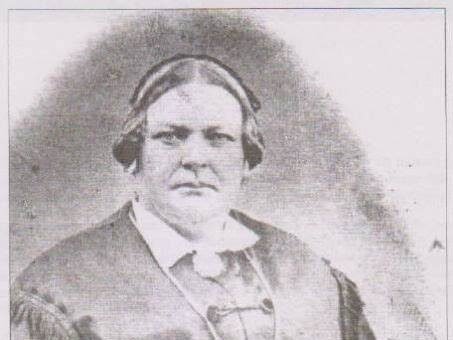In the early 19th century, Agnes Davidson, later known as Agnes Buntine, was born into a humble family in Glasgow, Scotland. Her father, John Davidson, was a crofter and her mother, Sarah, a housewife. Growing up with five siblings, Agnes developed a strong work ethic, likely contributing to her later accomplishments.
Despite limited educational opportunities, Agnes worked as a dairymaid, a common occupation for women of her background at the time. In 1839, seeking a new life, the Davidson family, persuaded by their neighbor Hugh Buntine, embarked on a challenging journey to Australia. The motive for their migration, like many others, was the hope for a better future.
Their voyage to Australia was a perilous one, with many succumbing to illness during the months-long journey. Upon arriving in Melbourne’s newly established Glen Huntley in April 1840, Agnes, then 17, continued her work as a dairymaid. The Davidson family maintained close ties with Hugh Buntine, a widowed brick and tile maker with five children, who had also relocated from Sydney to Melbourne.
Agnes and Hugh began a relationship, leading to their marriage on October 30, 1840. The couple initially tried dairy farming at Merry Creek but soon heard of the opportunities in the resource-rich Gippsland. Despite the region’s underdevelopment, they believed in the potential for a prosperous life there.
Agnes’s journey to Gippsland was undertaken while she was seven months pregnant. Shortly after settling in Port Albert, she gave birth to a son, Albert, the first white child born in Gippsland. This earned Agnes the title of “White Mother of Gippsland.” The couple’s next venture was the Bush Inn near Tarraville, a resting place for travelers, and a general store. Hugh, with no medical training, began assisting the sick and injured, earning the nickname “Dr. Buntine.”
 The couple later moved to Bruthen Station, a site of significant historical trauma where the indigenous GunaiKurnai people suffered one of the region’s worst massacres. The Buntines moved there some 3-4 years after the massacres but their relationship with the GunaiKurnai was recognised to be “checkered”, as was sadly the case with most white settlers at the time.
The couple later moved to Bruthen Station, a site of significant historical trauma where the indigenous GunaiKurnai people suffered one of the region’s worst massacres. The Buntines moved there some 3-4 years after the massacres but their relationship with the GunaiKurnai was recognised to be “checkered”, as was sadly the case with most white settlers at the time.
To support their growing family, which expanded to 10 children by 1855, Agnes launched a bullock carting business in the early 1850s. This venture was unusual for a woman, given the physical demands and societal expectations of the time. Agnes became renowned as the first and most famous female bullock driver in Australia. Her first major trip in 1851 involved transporting cheese and butter across the Great Dividing Range to Bendigo’s goldfields.
Agnes’s reputation for dependability and her ability to access remote areas quickly grew. Her skills with a stock whip and her courage in traversing difficult terrain were widely recognized. As local gold rushes increased population and demand, Agnes expanded her business, opening stores in strategic locations.
By 1858, with Hugh’s health declining, Agnes became the primary breadwinner, continuing to transport goods across Victoria. Her strength, resilience, and dedication to her family and business left a lasting legacy in the history of Victoria and particularly in Gippsland, where she is remembered as a pioneering figure.